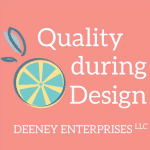
AI in Reliability and Maintenance
In this episode, I speak with Sandeep Jadhav about Machine Learning and Artificial Intelligence in Maintenance and Reliability.
We discuss the implementation of Machine Learning in the Industry, the challenges it presents, and what can be done to implement it successfully.









 Ask a question or send along a comment.
Please login to view and use the contact form.
Ask a question or send along a comment.
Please login to view and use the contact form.